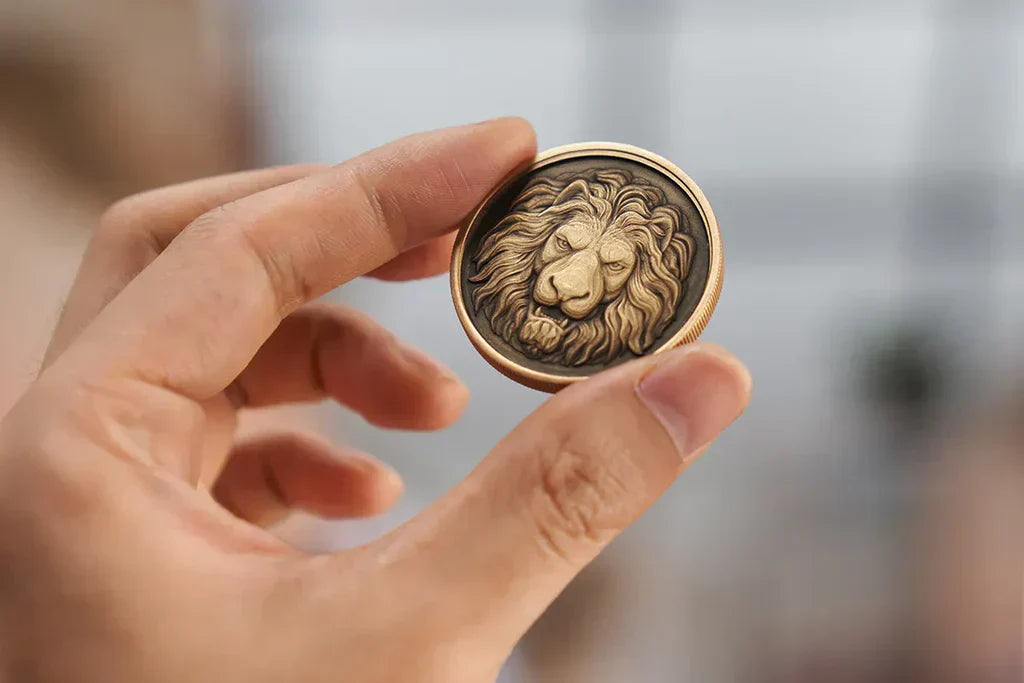
5 Best Laser Engravers For Challenge Coins: Enhance Your Craft with Precision Tools
Finding the right laser engraver for engraving challenge coins can significantly enhance any engraving project. The top options available today offer precision, speed, and versatility, making them ideal for anyone looking to create stunning designs on metal coins. From hobbyists to professionals, understanding the essential features of these machines is crucial for achieving the best results.
Table of Contents:
For those with shorter attention spans, here's the TL;DR on selecting a laser engraver for challenge coins -
- Our Budget Pick: The Gweike G2 Max 50W Fiber Laser is a perfect budget entry point for those just dabbling into coin engraving as a hobby or experimenting with adding a new product line to your laser business.
- Our High Performance Pick: The Haotian 100W JPT MOPA Fiber is perfect for those who want ultimate power and have the budget to invest in a commercial level machine that will last years.

Today’s laser engravers are designed to cater not only to deep engraving but also to various materials and project sizes. Each engraver on the list is evaluated based on its performance in deep engraving tasks, ensuring that users can choose the right tool for their specific needs. By considering factors like power, speed, and user-friendliness, one can find the perfect match for their engraving ambitions.
Investing in a quality laser engraver can open up new creative possibilities and enhance the engraving experience. With the right machine, anyone can produce detailed and personalized designs on coins that truly stand out.
1) Top 5 Engravers For Challenge Coin Engraving

When it comes to deep coin engraving, selecting the right laser engraver is crucial. The following options are known for their precision, speed, and overall performance in engraving metal surfaces.
Gweike G2 Max 50W Fiber Laser Engraver:
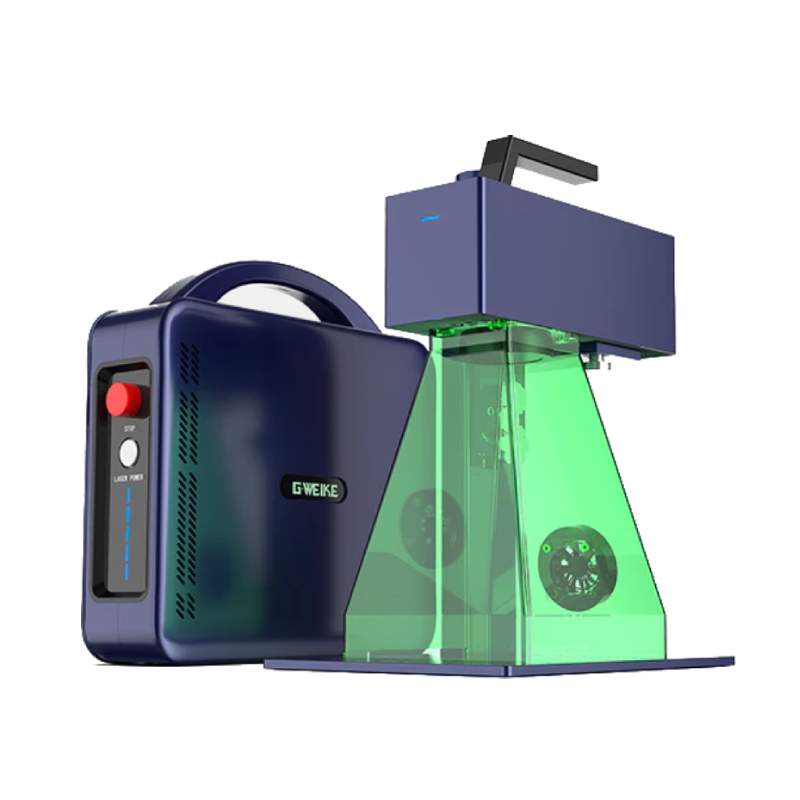
The Gweike G2 Max 50W sets the bar high for professional coin engraving machines, offering unmatched power and precision. With its 50W fiber laser, the most powerful portable fiber laser currently on the market, it effortlessly engraves deep, intricate designs into metal surfaces, making it a perfect choice for laser engraving challenge coins or custom coin projects. At max power, you can engrave as deep as 5mm into metal surfaces.
With a work area of 150 x 150 mm, this machine accommodates larger tasks while maintaining impeccable detail. Its robust design ensures durability, while its advanced software allows for fine-tuned adjustments. The G2 Max is ideal for professional engravers who prioritize quality and efficiency in every project.
To top it off, it is also portable, which means that you are not tied to your work space and you can even engrave at angles easily, something very difficult to achieve with other fiber lasers.
LaserPecker 5 Dual-Source 20W Fiber + Diode Laser Engraver:
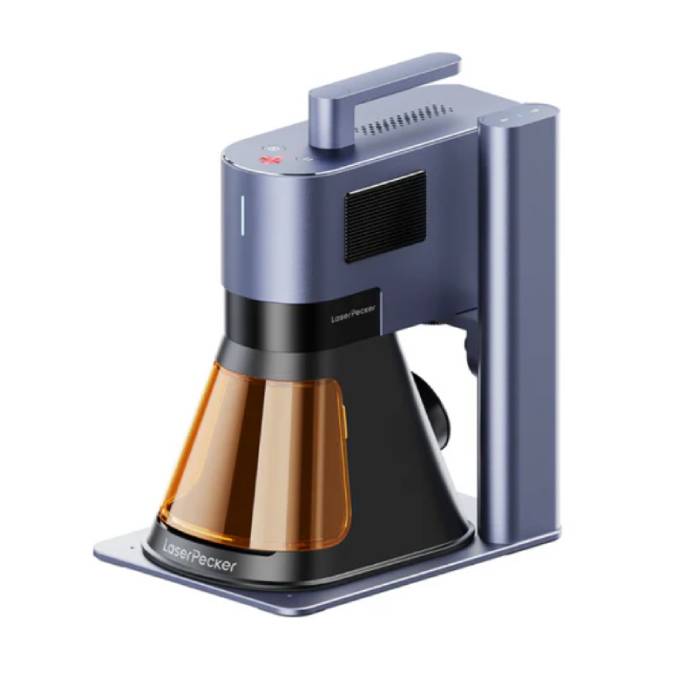
The LaserPecker 5 is a compact yet powerful coin engraving machine, perfect for creating laser-engraved coins with precision and ease. Its dual-source laser technology combines a 20W diode laser with a 20W fiber laser, ensuring exceptional versatility for engraving challenge coins and other metal projects.
With its user-friendly design and app support, creators can upload designs directly from their smartphones, making the LaserPecker 5 ideal for on-the-go engraving tasks. Its lightweight build and intuitive operation cater to both beginners and seasoned engravers. This portable solution is a go-to for those seeking efficient and detailed laser engraving capabilities.
EM-Smart Nova 25W:
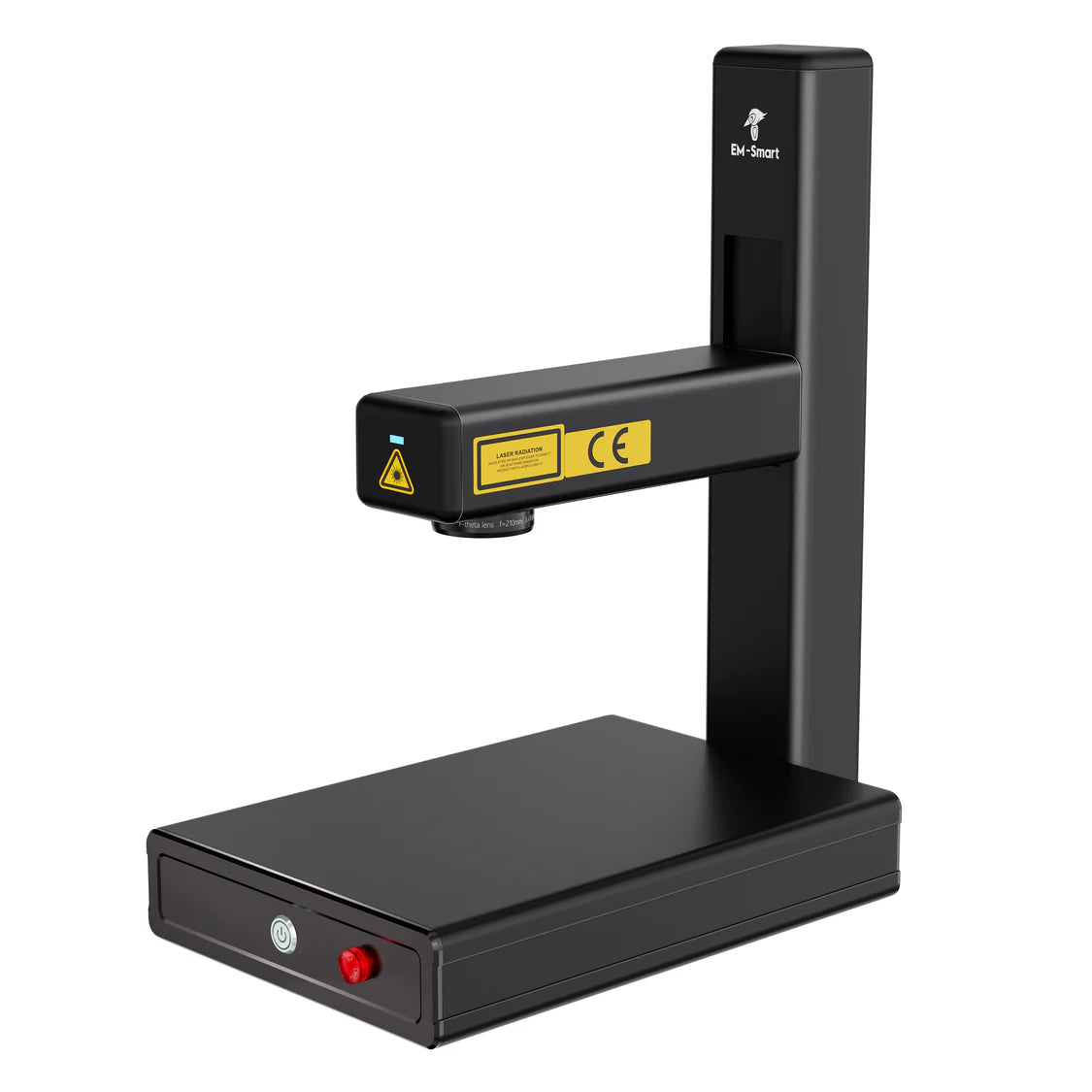
The EM-Smart Nova 25W is a versatile and efficient coin engraving machine, equipped with a 25W fiber laser for exceptional precision. Ideal for crafting laser-engraved coins and custom challenge coin designs, it delivers impressive results on various metal surfaces.
Compact and lightweight, the Nova is designed for portability without compromising performance. Its simple software interface and intuitive controls make it accessible to both novice and experienced users. Perfect for small business owners and hobbyists alike, the EM-Smart Nova combines quality and convenience for all your engraving needs.
ComMarker B6 JPT MOPA:
The ComMarker B6 JPT MOPA Fiber Laser Engraver is designed for speed and efficiency in engraving. Its compact size doesn’t compromise its powerful capabilities. This machine features a fixed focus laser that delivers deep engravings into metal coins easily.
With auto-focus and a JPT fiber laser source, it is built for high quality. Users benefit from its high engraving speed, which significantly reduces project time. The software it uses is straightforward and enables quick setup.
Highlighting its portability, the B6 is smaller than other industrial fiber lasers and is suitable for users with limited workspace. Its performance in deep engraving is dependable. This engraver is an excellent option for those looking to produce high-quality work in less time.
Haotian JPT MOPA Split Fiber Laser Engraver - 30/60/80/100/120/200W:
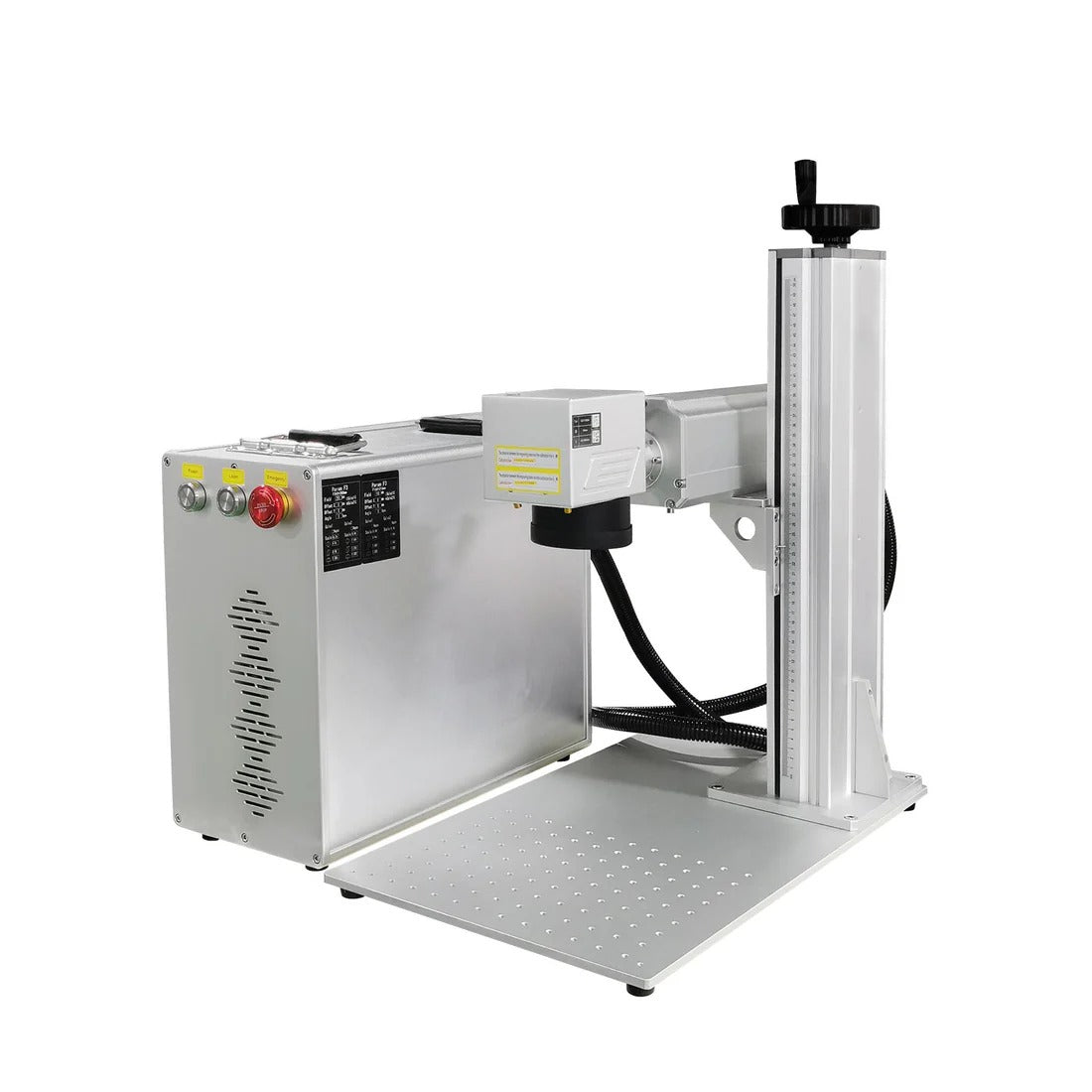
The Haotian JPT MOPA Split Fiber Laser Engraver fits the bill if you have a larger budget to play with and are willing to invest in a high-performance solution for deep engraving on metal coins. Designed with a split fiber laser system that comes in various power options, it can take your challenge coin engraving to the next level.
Its 150 x 150 mm work area is perfect for small to medium-sized projects, and the adjustable power settings provide flexibility for various engraving needs. Known for its reliability and user-friendly interface, the Haotian JPT MOPA is a durable and dependable machine tailored to professional engravers looking to elevate their craft.
2) Essential Features for Challenge Coin Engraving

When selecting a laser engraver for coin engraving, key features can impact the quality and efficiency of the work. Understanding these features helps in choosing the right machine for detailed and precise engraving.
Engraving Speed and Quality
Engraving speed is crucial for productivity, especially for high-volume projects. A good engraver should have adjustable speeds to accommodate different materials and designs.
The quality of the engraving is determined by factors such as laser power and DPI (dots per inch). High DPI settings provide finer detail, which is essential for intricate designs on coins.
Accessory Compatibility
When choosing a laser engraver, ensuring that it is compatible with various accessories is vital. Accessories like rotary attachments are essential for engraving cylindrical objects.
The ability to use different engraving lenses and laser sources also adds versatility to the machine. Many brands offer specific attachments designed to enhance capabilities, such as specialized lenses that improve focus and precision.
Incorporating these accessories allows for customization of the engraving process, making it easier to achieve desired results for different coin sizes and designs.
Safety and Reliability
Safety features are a necessary consideration when operating laser engravers. Look for models equipped with emergency stop buttons, safety enclosures, and auto-shutoff functions to mitigate risks.
Reliability is equally important. A robust machining structure ensures consistent performance without frequent breakdowns. Users should pay attention to reviews and recommendations to gauge the reliability of a specific model.
Investing in a machine with good safety standards and dependable performance provides peace of mind and enhances overall productivity during coin engraving tasks.
3) Choosing the Right Laser Engraver for Your Coins
Selecting the appropriate laser engraver involves understanding the intended use, budget considerations, and software functionalities. Each factor plays a crucial role in ensuring the chosen engraver meets the user's specific needs.
Hobbyists vs. Small Businesses
Hobbyists often seek laser engravers that are versatile yet affordable. They may favor models like the Glowforge, which is user-friendly and great for crafting. These machines are suitable for personal projects, such as custom gifts or DIY crafts.
In contrast, small businesses typically require machines that can handle heavier workloads and offer higher precision. They may invest in more durable equipment designed for continuous use. These engravers should support various materials and deliver quicker production times. Understanding whether the user is a hobbyist or a business owner helps narrow down the choices.
Price and Value for Money
Price is a significant factor when choosing a laser engraver. Hobbyists might look for budget-friendly options without sacrificing quality. A good balance of price and features often leads them to mid-range models.
Small businesses, however, might prioritize value over cost. They may be willing to invest in more expensive machines if they deliver superior performance and longevity. It's essential to analyze each model's features against its price. Those that include warranties or customer support may offer additional value, making them more appealing purchases.
Software and Ease of Use
Software compatibility is vital for both beginners and experienced users. The laser engraver should work seamlessly with design software to produce high-quality engravings. User-friendly interfaces are particularly beneficial for those new to engraving.
For professionals, advanced features in the software can enhance production efficiency and creativity. Ease of use should not be overlooked, as it affects the overall engraving experience. A machine that simplifies setup and operation will save time and increase productivity.
4) Frequently Asked Questions

What features should I look for in a laser engraver suitable for deep coin engraving?
When choosing a laser engraver for deep coin engraving, users should look for high wattage, as this affects engraving depth. A focused laser beam and adjustable settings are also important for precision.
Additionally, a machine with good cooling systems can help maintain performance during longer engraving sessions. Lastly, consider models that support various engraver bits for different designs.
How do laser engravers vary in their ability to engrave deeply on metal surfaces?
Laser engravers use different types of lasers, impacting their depth capabilities. Pulsed fiber lasers are generally better for metal as they deliver high energy in short bursts.
Conversely, CO2 lasers may struggle with deep engraving on metals. The engraver’s speed and power settings also play a crucial role in achieving the desired engraving depth.
What are the top recommended laser engravers for beginners focusing on deep coin engraving?
For beginners, models that are user-friendly and have a solid reputation include the Gweike G2 Max 50W and LaserPecker 5. Both are known for their reliability and ease of setup.
These engravers offer a balance between performance and price, making them accessible for those new to deep coin engraving.
Which budget-friendly laser engravers are capable of detailed deep engraving for small businesses?
For small businesses on a budget, the LaserPecker 5 is a strong option. It provides good performance without breaking the bank.
Another choice is the EM-Smart NOVA 25W, which also comes at an affordable price while supporting detailed engravings on metal surfaces.
What might cause inadequate depth in laser engraving and how can it be remedied?
Inadequate depth in laser engraving can result from improper settings or insufficient power. Users should ensure that the machine settings match the material being engraved.
Additionally, the focus of the laser and the speed of the engraving should be adjusted for better results. Regular maintenance of the engraver can also prevent performance issues that affect depth.



Leave a comment